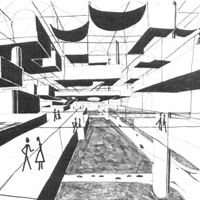Soft mobility and pedestrian networks in urban areas
Abstract
By referring to the wider strategies set up, starting from the middle of the Nineties, by the European cities to promote a sustainable urban mobility and to the most recent concept of soft mobility, which generally includes pedestrian and cycling mobility, this contribution specifically investigates the subject of pedestrian mobility in urban areas, outlining criteria and methods for the project of networks of urban public open spaces, such as roads and squares, devoted to an exclusive or prevailing pedestrian use. First of all, the paper focuses on the multiple roles played by roads and squares within the cities: “axes” supporting different mobility flows, including the pedestrian ones, and in the meanwhile urban places in which different activities (commercial activities, meeting, and so on) take place. Grounding on that, the main reasons forcing towards an organization of such spaces as urban networks have been outlined. Then, some guidelines and methodological elements, both for singling out the pedestrian networks and for the project of their individual elements taking into account the correspondence between foreseen uses and spatial features of each element, have been provided. Furthermore, the links between the pedestrian networks and the main junctions of other urban mobility networks, as well as between the first ones and the urban contexts, have been stressed. Suggested guidelines and methodological elements have been applied and tested both on historical and suburban areas of the city of Naples; nevertheless they represent only a first step towards the setting up of a method for pedestrian networks organization in urban areas.Downloads

Copyright (c) 2014 Tema. Journal of Land Use, Mobility and Environment

This work is licensed under a Creative Commons Attribution 4.0 International License.
Authors who publish in this journal agree to the following:
1. Authors retain the rights to their work and give in to the journal the right of first publication of the work simultaneously licensed under a Creative Commons License - Attribution that allows others to share the work indicating the authorship and the initial publication in this journal.
2. Authors can adhere to other agreements of non-exclusive license for the distribution of the published version of the work (ex. To deposit it in an institutional repository or to publish it in a monography), provided to indicate that the document was first published in this journal.
3. Authors can distribute their work online (ex. In institutional repositories or in their website) prior to and during the submission process, as it can lead to productive exchanges and it can increase the quotations of the published work (See The Effect of Open Access)
